First, an Overview of the High-Frequency Welding Process for Steel Pipe Production
In high-frequency welding, a steel strip is fed into a forming machine, where it is formed into a cylindrical billet and passed through an induction coil. The magnetic field near the induction coil generates an induced current that flows through the edges of the steel strip. The edges are heated by their own resistance, generating resistance heat. The heated edges are then squeezed by extrusion rollers to form the weld. High-frequency welding requires no additives and is essentially a forge weld. If the production process is well controlled, there will be no residual molten metal or oxides on the fusion surface. If a weld specimen is cut, polished, and etched, and examined under a low-power metallographic microscope, the heat-affected zone (HAZ) will resemble a waist drum. This is due to the heat generated by the high-frequency current entering the edges and sides of the steel strip. The HAZ is slightly darker than the base metal because carbon diffuses toward the heated strip edges during welding and is absorbed there as the weld cools. In particular, the carbon near the edges oxidizes to CO or CO2, leaving the remaining iron free of carbon and lighter in color. The metal flow lines seen in metallographic specimens are actually the result of the high-carbon zone being rolled into a flat, discontinuous surface when the billet is rolled into a steel strip. The rise angle of the metal flow lines is often used to evaluate the degree of upsetting during welding.
Second, Common Defects of High-Frequency Welding
High-frequency welded steel pipes may exhibit a variety of defects, and the names of these defects are not completely standardized. Based on the characteristics of our welded steel pipe production, the following defects are commonly encountered: ① Inclusions; ② Insufficient fusion; ③ Sticking welds; ④ Cast welds; ⑤ Porosity; ⑥ Skip welds. Not all of these defects exist, but they are common in high-frequency welded steel pipes.
1. Inclusions in High-Frequency Welded Steel Pipes - Black Overburned Inclusions.
This type of defect occurs when metal oxides are trapped on the melt surface rather than being extruded with the molten metal. They form on the molten metal surface at the V-neck. At the V-notch, if the approach speed of the steel strip edge is slower than the melting speed, while the melting speed is faster than the molten metal discharge speed, a narrow fan-shaped area containing molten metal and metal oxides forms behind the apex of the V-notch. This molten metal and metal oxides cannot be completely discharged through normal extrusion, forming an inclusion band. After the weld is flattened, black burnt inclusions are easily visible in the weld fracture. Compared to the fibrous fracture of the weld, black burnt inclusions have a flat fracture surface and lack metallic luster. These defects may occur singly or in chains. The probability of inclusions increases when the V-notch angle narrows, for example, to less than 4° or when the silicon-manganese ratio in the steel is less than 8:1. However, the silicon-manganese ratio in steel is more difficult to control than other influencing factors and is primarily determined by the chemical composition of the base metal. Measures to prevent black burnt inclusions in high-frequency welded steel pipes:
① Control the V-angle within 4° to 6°;
② Ensure reliable tooling and equipment installation to ensure a stable V-length.
③ Maintain a relatively low welding temperature for good weld quality;
④ Avoid a silicon-manganese ratio less than 8:1 in the chemical composition of the steel strip base metal.
2. Inclusions in High-Frequency Welded Steel Pipes - White Oxide Inclusions.
Calling this defect a white oxide inclusion is not entirely accurate. It is actually due to insufficient fusion caused by pre-arcing, without foreign matter trapped on the fusion surface. Typically, burrs or rust fall before the apex of the V-notch, forming a bridge that short-circuits and causes current jumps, leading to pre-arcing. The short-circuit current momentarily changes the current direction, reducing the heat generated at the V-notch. This transient current creates a very small defect, generally no longer than the wall thickness. The weld fracture reveals a small, bright, flat surface surrounded by fibrous fractures. Measures to prevent white peroxide inclusion defects:
① Control the V-notch angle within 4° to 6°;
② Reduce shear burrs;
③ Proper edge preparation or minimize damage to the steel strip edges;
④ Keep the cooling water clean and prevent it from flowing toward the V-notch.
3. Insufficient fusion of high-frequency welded steel pipes - The edges of high-frequency welded steel pipes are not fully fused (cracks).
The two steel strip edges do not fully fuse to form a good weld. The cracked edges appear blue, indicating that the steel strips were heated. However, a flat and smooth steel strip edge indicates incomplete weld fusion. The most direct cause of this defect is insufficient welding heating. However, other factors, such as the weld heat input, the V-notch angle and V-notch heating length, the magnetic rod installation and cooling conditions, and the induction coil size, can contribute individually or in combination to the defect. Measures to prevent insufficient fusion:
① Match the welding input with the material characteristics and welding speed;
② Position the magnetic rod 3.2-3.5mm beyond the center of the extrusion roller;
③ The V-shaped opening angle should not exceed the pipe diameter;
④ The V-shaped opening angle should not exceed 6°;
⑤ The difference between the inner diameter of the induction coil and the outer diameter of the steel pipe should not exceed 6.5mm;
⑥ The steel strip width should be suitable for the required pipe diameter.
4. Insufficient Fusion of High-Frequency Welded Steel Pipes - Insufficient Edge Fusion (Waviness) of High-Frequency Welded Steel Pipes.
Insufficient edge fusion of high-frequency welded steel pipes occurs due to the absence of metal at the fusion surface. This defect often occurs on the outside or inside of the steel strip edge and is similar to peroxide defects. This defect is caused by flattening and cracking of the weld at three o'clock. The fracture morphology is flat and matte.
Preventative measures for insufficient edge fusion of high-frequency welded steel pipes:
① Ensure the steel strip edges are straight and parallel;
② Use a good extrusion rate;
③ If the fracture is silver-gray due to bulging, use a higher welding heat input.
5. Insufficient Fusion in High-Frequency Welded Steel Pipes - Insufficient Fusion in the Middle of High-Frequency Welded Steel Pipes (Internal Cold Welding).
After the weld of an insufficient fusion weld in a high-frequency welded steel pipe is broken, the cross-section in the middle of the wall thickness appears as a flat, silver-gray strip. The edges are fibrous. This welding defect occurs when the power required by the welding speed exceeds the rated power amplifier of the welder, preventing the entire edge of the steel strip from heating to the optimal temperature and heating depth required for the weld. Insufficient fusion in the middle of a high-frequency welded steel pipe can also be caused by insufficient drainage of molten metal from the joint surface.
Preventative measures for insufficient fusion in the middle of a high-frequency welded steel pipe:
① Increase the welder power;
② Increase the weld extrusion;
③ Increase the V-notch length or reduce the welding speed.
6. Cast Welding (Brittle Welding) in High-Frequency Welded Steel Pipes.
Cast welding occurs when the molten metal on the joint surface is not fully drained. The cast metal on the fusion surface contains metal oxides, similar to overburned oxides. The fracture morphology varies depending on the amount of residual cast metal. Most of the welds now exhibit a flat, brittle morphology. Metallographic examination reveals cast metal on the joint surface. Cast-welded steel pipes crack when flattened.
Preventative measures for high-frequency welded steel pipes:
① Increase weld exhaust;
② Increase the width of the steel strip.
7. Porosity (pinholes) in high-frequency welded steel pipes.
Porosity on the welded joint surface of high-frequency welded steel pipes is caused by inadequate exhaust during high-temperature welding. The fracture morphology is fibrous, with spherical, bright white spots randomly distributed throughout the fracture. When white spots appear on the outer wall, the surface appears black due to oxidation. Small pores can be seen before external burr removal, and pores can also be seen on the fusion line after external burr removal.
Preventative measures for pores in high-frequency welded steel pipes:
① Reduce welding input;
② Increase extrusion.
8. Skip welding in high-frequency welded steel pipes.
Skip welding in high-frequency welded steel pipes can be performed in various forms. Typically, this type of defect has a regular, continuous distribution. Defects on the outer wall thickness of high-frequency welded steel pipe resemble wavy defects, generally occurring at equal intervals.
Preventative measures for skip welding of high-frequency welded steel pipes:
①Add filtering equipment for the welding current.
②Check the input voltage.
③Inspect the rollers and shafts.
Suggestions for Defect Prevention
In actual production, defects often result from a combination of factors. A narrow V-notch does not necessarily produce burnt oxides unless the extrusion rate is slightly less than normal. A small extrusion rate may be caused by a slightly narrow slitting width of the steel strip, tooling wear, or improper equipment installation. Weld defects can also occur due to factors outside the weld zone. For example, cold welds can occur when the cooling pump is evacuated, preventing the magnet rod from being fully cooled. The magnet rod instantly heats up, reducing the heat concentrated at the V-notch and causing a cold weld. Increasing the welding input before the cooling pump fails completely and the magnet rod fails completely can prevent cold-weld defects.
The best way to prevent defects is to identify the root cause and collect as many operating parameters as possible that may cause the defect. Determine relevant parameters, such as working width, welding speed, screen current, screen pressure, grid current, extrusion volume, etc., observe actual operation, and record to find abnormal fluctuations and analyze the causes of defects. During production, the set value may be slightly exceeded, but several related variables are also slightly exceeded at the same time. The cumulative results show that it is enough to cause defects. Analyzing and classifying common defects and their causes during the production process is very beneficial for operators with defect experience, which can improve efficiency and reduce costs.
Overview
(1) Most welding defects are caused by improper installation or commissioning of the unit.
(2) Selecting a reasonable manufacturing plan, monitoring daily operation records, and regularly training high-frequency welders are conducive to reducing defects.
(3) Improving the quality of shearing and edge processing and coil energy storage technology is conducive to edge loss defects.
(4) Preventive maintenance can prevent tooling wear.
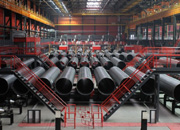 Threeway Steel is known as a professional supplier engaged in manufacturing and distributing a wide range of steel pipe, and our headquarter located the central part of China – Hunan and six associated factories throughout China.
Threeway Steel is known as a professional supplier engaged in manufacturing and distributing a wide range of steel pipe, and our headquarter located the central part of China – Hunan and six associated factories throughout China.
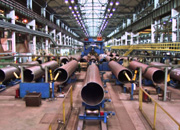 Threeway Steel is known as a professional supplier engaged in designing, manufacturing and distribution of a wide range of steel products with the headquarter located the central part of China – Hunan and six associated factories throughout China.
Threeway Steel is known as a professional supplier engaged in designing, manufacturing and distribution of a wide range of steel products with the headquarter located the central part of China – Hunan and six associated factories throughout China.
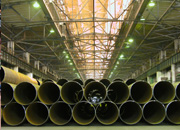 Threeway Steel is known as a professional supplier engaged in designing, manufacturing and distribution of a wide range of steel products with the headquarter located the central part of China – Hunan and six associated factories throughout China.
Threeway Steel is known as a professional supplier engaged in designing, manufacturing and distribution of a wide range of steel products with the headquarter located the central part of China – Hunan and six associated factories throughout China.
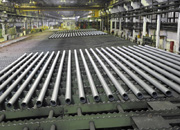 Threeway Steel is known as a professional supplier engaged in designing, manufacturing and distribution of a wide range of steel products with the headquarter located the central part of China – Hunan and six associated factories throughout China.
Threeway Steel is known as a professional supplier engaged in designing, manufacturing and distribution of a wide range of steel products with the headquarter located the central part of China – Hunan and six associated factories throughout China.
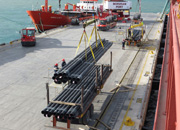 Threeway Steel is known as a professional supplier engaged in designing, manufacturing and distribution of a wide range of steel products with the headquarter located the central part of China – Hunan and six associated factories throughout China.
Threeway Steel is known as a professional supplier engaged in designing, manufacturing and distribution of a wide range of steel products with the headquarter located the central part of China – Hunan and six associated factories throughout China.

